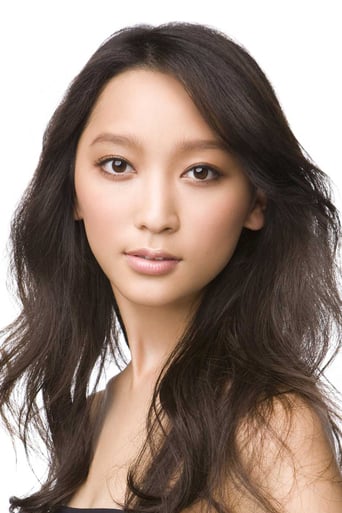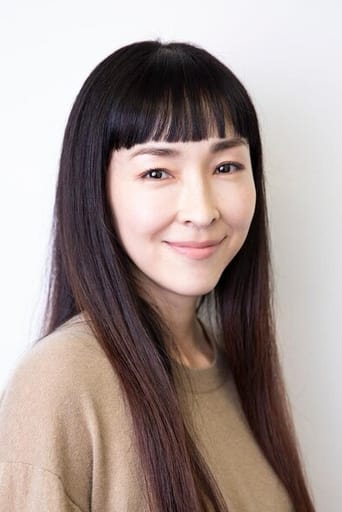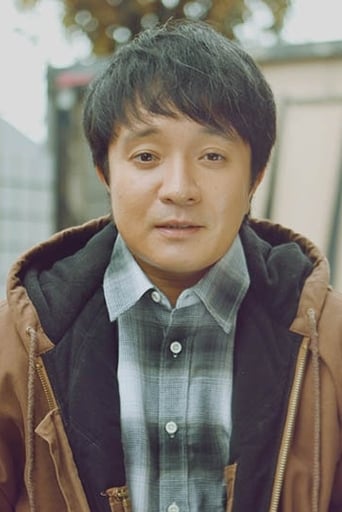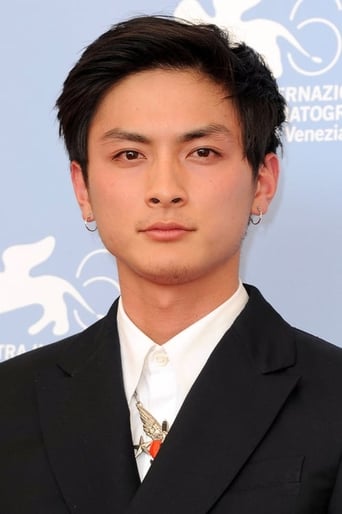Ed-from-HI
"Miss Hokusai" is a beautifully rendered and even 'mystic' anime originating from manga-artist Hinako Sugiura becoming a full-length animated 2015 Film by Keiichi Hara spotlighting legendary Edo period artist Hokusai, famous for the strikingly powerful and iconic painting "The Great Wave off Kanagawa" This particular story 'Miss Hokusai' reveals the lesser known tale of Hokusai's amazingly gifted & equally artistic daughter 'O-Ei' who never received the recognition she richly deserved, positing that many of O-Ei's original artistic renderings became later attributed to her renowned father.From a purely visual-perspective the meticulous animation of 'Miss Hokusai' presents abundantly breathtaking artistic renderings and recreations of 'Hokusai' inspired Works, also evoking the rich imagery inherent to Classic Japanese Edo period-setting with all its sublime & ineffable-beauty.From the standpoint of storytelling 'Miss Hokusai' provides profound insights into the highly creative but also chaotic lifestyle of the obsessive artist, a Life filled with the endless search for unpredictable/ unexpected but authentic creative inspiration.There are also 'spiritual' (e.g. primarily Buddhist) elements introduced as the Story progresses which adds greatly to authenticity, providing additional insights about the culture (and belief-structure) inherent to the specific time & place in which O-Ei and her father Hokusai produced their timeless Works.'Miss Hokusai' embodies the rich combination of strikingly beautiful animation enhanced by an intriguing rumination reflecting on Edo-period Japanese culture replete with its deeply-spiritual qualities and ineffable contradictions, an anime film that is beautiful, unique and even enlightening.
alerter
MISS HOKUSAI (MH) is an ambitious and visually sumptuous anime interpretation of the Edo period historical manga _Sarusuberi_, written/illustrated by Hinako Sugiura. The film is a brilliant exercise in the Japanese Buddhist concept of "everyday suchness." When you look at a centuries old Japanese painting of a young girl in a garden, staring into a bamboo aquarium containing goldfish and bare accouterments, you think you know what you see, but can you really see what the artist experienced to create that painting, let alone the ideas underlying the image? The source manga is disconnectedly episodic in nature and it's a real stretch to claim that there's any main character therein, even though the historical figure Katsushika Hokusai pops up repeatedly early in the series.Hokusai's most famous historical work is a woodblock print series, yet, for all of MH, we never see him work on a woodblock. We do see Hokusai paint. Are director Hara, screenwriter Maruo and ProductionIG messing with us? No. Hokusai is not the point of this story.The Edo period is a time when chronic illness turns to death in the blink of an eye. Although Hokusai pays little attention to healthy living, he's highly adverse to spending time with his terminally ill youngest daughter, for fear of catching something that might prevent him from living to be 100. For reasons known only to him, Hokusai believes he'll achieve artistic mastery at that nice round age.It's another daring move to make Hokusai's daughter, Katsushika O-Ei, the seemingly central character of MH. Yes, she's in nearly every frame, beautifully and sparingly drawn. Yes, MH is a feminist tale.O-Ei is the chosen vehicle for telling the anime's story which is larger than just her. She, too, is a rather accomplished painter. Later in the manga series, O-Ei grows more prominent, without becoming central. Don't expect anything from O-Ei, but do be mindful/aware as you observe her context. If you relax in your seat, this happens naturally. The only obligation is to remember.As in real life, O-Ei's personality is very much like her father's, yet O-Ei is judged by many, on screen and in the audience, as being "harsh" and "unlikeable," while drunken and slovenly Hokusai is well admired by many more.O-Ei is a woman far ahead of her time, even as she willingly carries out "traditional" duties of assisting her father in his work. She knows that she is honing her own skills through the experience, while being far from subservient.Valuable lessons, harsh though they may seem, from Hokusai to O-Ei, about composition and balance, are literally and tersely depicted in the context of the story's moment.O-Ei's highly opinionated and suffers no fools. She's pursued by some for her beauty and by others for her art. O-Ei is devoted to her sickly younger sister, O-Nao, and gets along well with her mother. O-Ei's hardly maladjusted.MH shows us everyday Edo period life as an artist, who just happens to be O-Ei, experiences it.We learn that O-Nao is blind and that she "sees," with her mind's eye, that the goldfish pets given to her by O-Ei are having great fun inside their bamboo aquarium, which brings O-Nao equal joy and respite from her illness.MH includes many direct representations of how elements of everyday life become ukiyo-e prints and paintings, often emphasized in perfectly timed freeze frames that do not interrupt the flow of the film.Sisters in a riverboat, fingers trailing in the rippling water, speculating about the dangers of rough open seas. Ripples become waves, becoming an imaginary tidal wave about to engulf the riverboat, scene turning into woodblock print. Visual poetry.O-Ei walking at sundown, through the shadows/light between city structures lining her way home. She passes Hokusai ambling along in the opposite direction across the street. As they pass, O-Ei is aware. Hokusai might not be. Both are in shadows, neither acknowledges the other. Then as O-Ei passes back into light, we see her admiring the fresh rays of light streaming between her fingers. A scene brimming with symbolism.(The more you know about Hokusai's work, the more Easter eggs you'll find in MH.) Mindfulness/awareness/context, within everyday life, are what MH is all about. Not "character development." Not "plot." Don't let western cultural conventions/blinders keep you from absorbing and enjoying what MH shows us about everyday suchness. O-Nao manages to see so many things within the limits of what her young mind can comprehend. At every step and turn, we all face limits, but everyday suchness allows for that. Too much is made about how trivially O-Ei's "marriage" is narratively tossed off in an end title card.The real O-Ei was briefly married to a fellow art student BEFORE she became an assistant to her ailing father. She divorced, because she found her husband to be a comically poor artist. She never had a need to remarry. The anime treats O-Ei's one marriage as seriously as she did. We see the gist of that "relationship" play out in O-Ei's later interactions with her male contemporaries in the film. ...Now, what do you see when you look at O-Ei's painting of O-Nao in a garden admiring her goldfish? Perhaps you see a contented blind girl, intently focused on the joyous watery sounds of her pets. She's also surrounded by the dotted red beauty of fallen tree blossoms all around her. The little girl, in a peaceful garden, is surrounded by death.O-Ei's painting is a wistful remembrance/celebration of her dearly departed sister, for which words can do no justice.That's the context of that centuries old painting. That's a deep taste of everyday suchness. That's the point of MISS HOKUSAI.
Alison
In 1814 Edo, Japan, a master artist Katsushika Hokusai, known as Tetsuzo, and his daughter O-Ei spend their time creating splendid paintings, some on commission and some just because. Tetsuzo lives away from his wife and younger daughter, who is blind, and he tends to have little to do with them, perhaps because he is afraid of illness and disability. Instead, he instructs O-Ei and others in his art, but in some ways his daughter outstrips even his talent. This lands them in trouble on occasion, for example when one of her paintings is believed by its owner to be enchanted by devils, but Tetsuzo knows how to make things right again. If only his daughter wasn't so hot-headed!This is a beautifully rendered anime based on a manga, Sarusuberi; having not read the manga, I don't know how faithful the film is to the source material. In any event, it looks lovely and the story of the artists' lives is very well told. It has more of an episodic feel to it than a straight plot-line, but since Tetsuzo was apparently a real person in 19th Century Edo (now Tokyo), that method of story-telling works very well. If you like anime, you'll love this movie.







